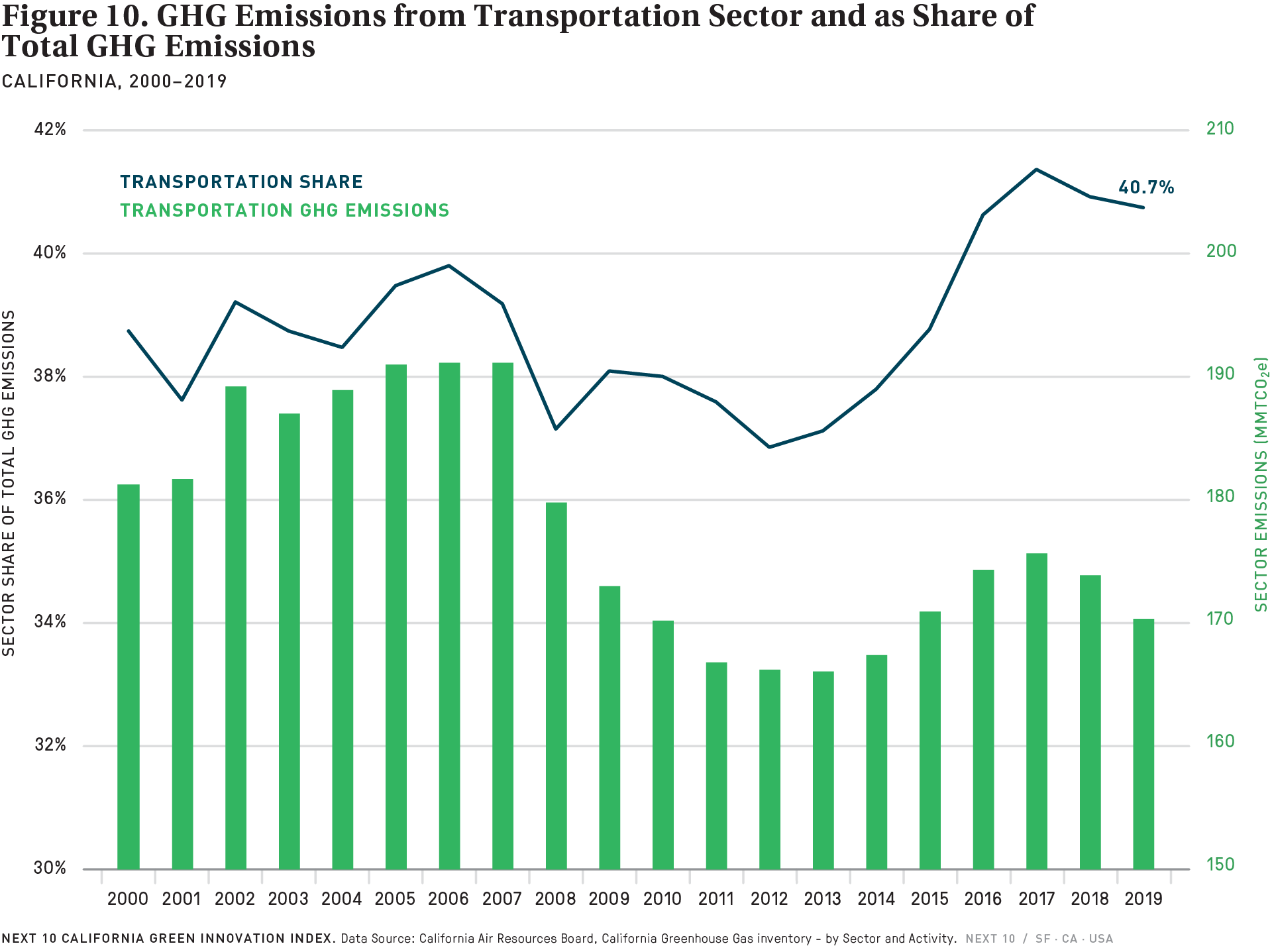Title
- The share of GHG emissions from the transportation sector was 40.7 percent in 2019—down slightly from 40.9 percent in 2018. The sector’s GHG emissions totaled 170.32 MMTCO2e in 2018, down 3.63 MMTCO2e (-2.1%) from 2017. Within the transportation sector, GHG emissions dropped 1.9 percent from on-road vehicles (-3.00 MMTCO2e; but most of the GHG emissions decrease came from the heavy-duty vehicles segment) but increased 3.5 percent (+0.10 MMTCO2e) from off-road vehicles.8 GHG emissions from heavy-duty trucks have ample room to decrease further, with California’s focus to electrify heavy-duty trucks. Moving forward, the state can anticipate further emissions reductions from the heavy-duty sector, given that California had recently passed Clean Trucks Rule, which was passed in July 2020.9 In addition, the fiscal year (FY) 2021-2022 state budget calls for a $1.4 billion investment in zero-emission buses and trucks, which would also help accelerate the decarbonization of heavy-duty trucks.10
8 Off-road vehicles include airport ground support equipment, construction and mining equipment, industrial equipment, and oil drilling equipment.
9 The Clean Trucks Rule requires that manufacturers of heavy duty trucks meet certain targets for sales of zero-emission trucks by 2035 (zero-emission truck sales would need to be 55% of Class 2b-3 truck sales, 75% of Class 4-8 of truck sales, and 40% of tractor sales). See: Arneja, P. (June 2020). Advanced Clean Trucks Fact Sheet. California Air Resources Board. Accessed on November 18, 2020. Retrieved from: https://ww2.arb.ca.gov/resources/fact-sheets/advanced-clean-trucks-fact-sheet
10 A copy of the transportation budget can be viewed here: http://www.ebudget.ca.gov/2021-22/pdf/Revised/BudgetSummary/Transportation.pdf
